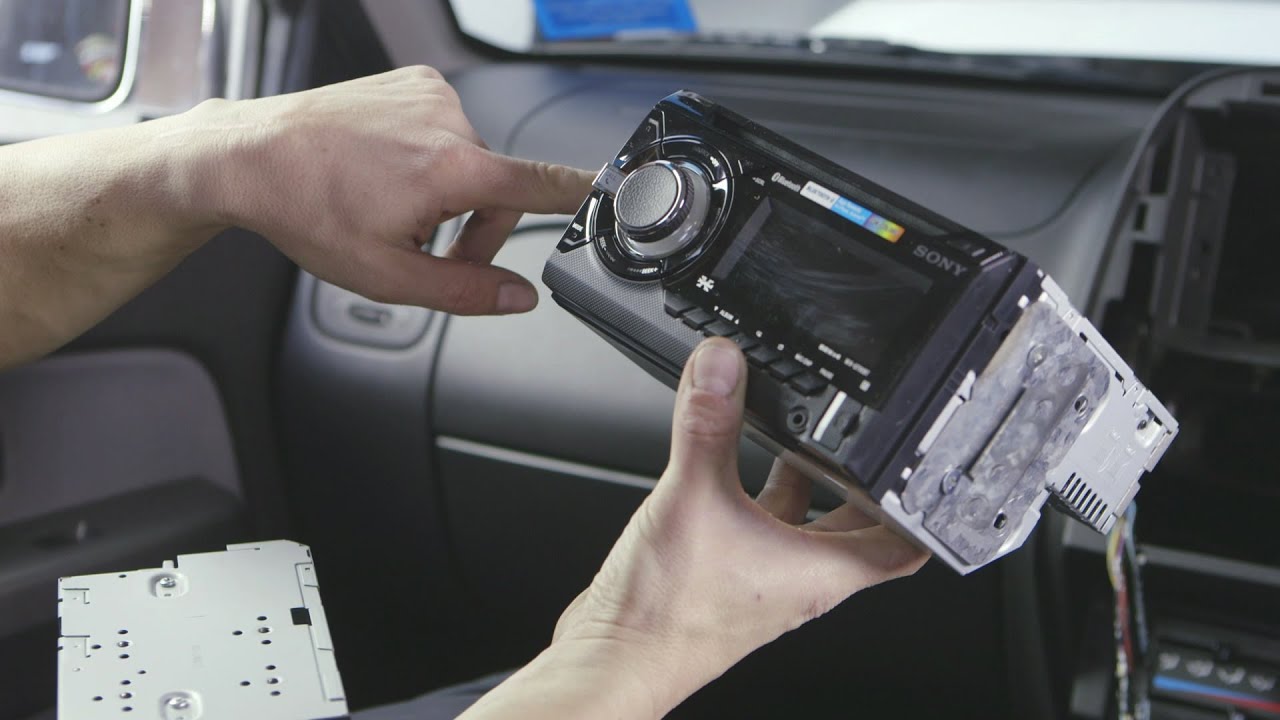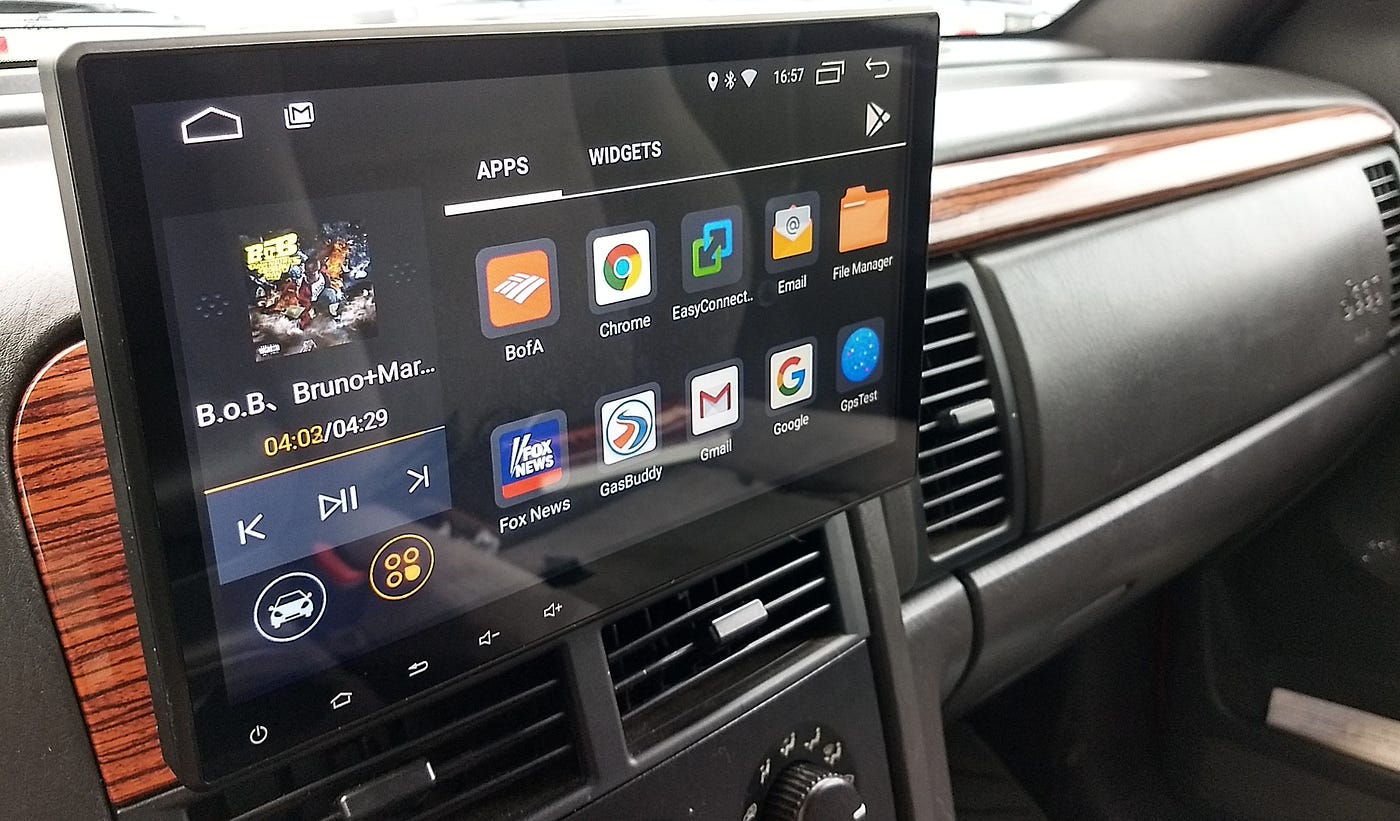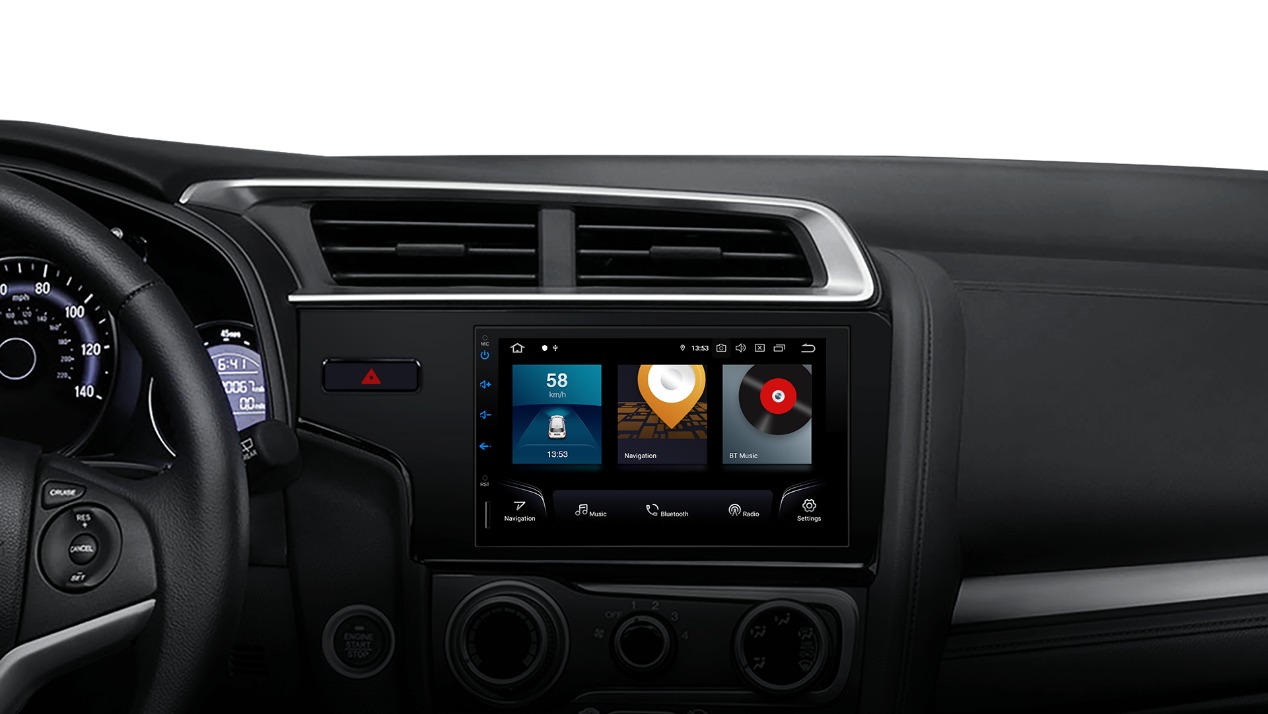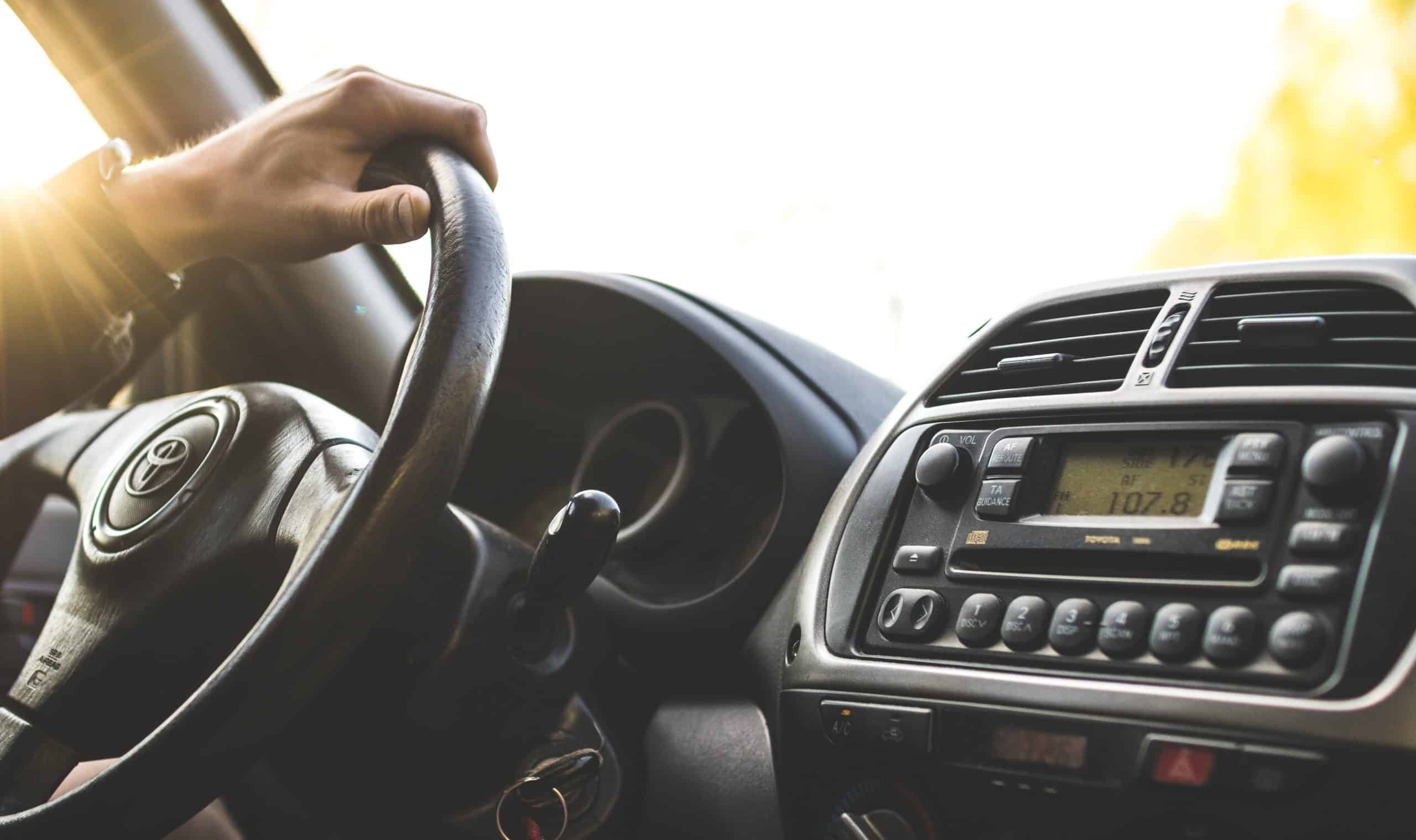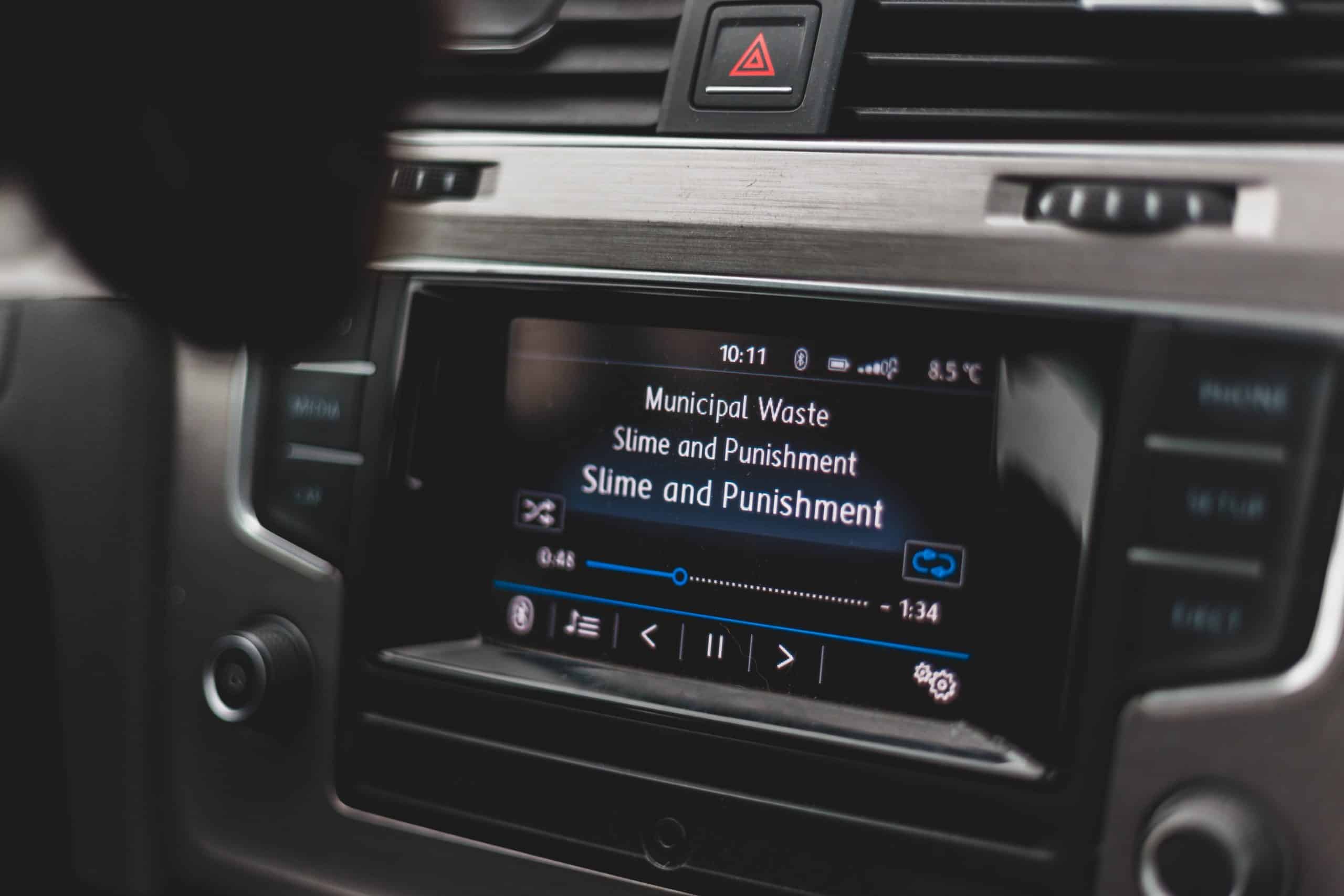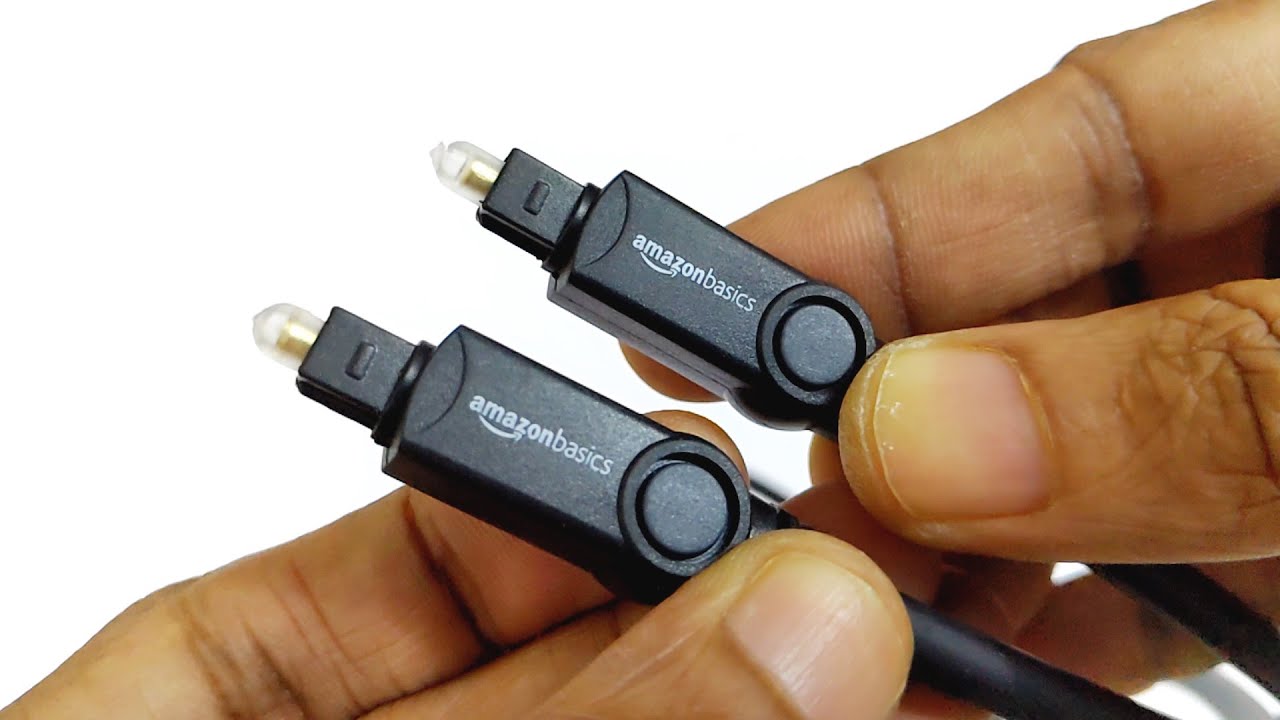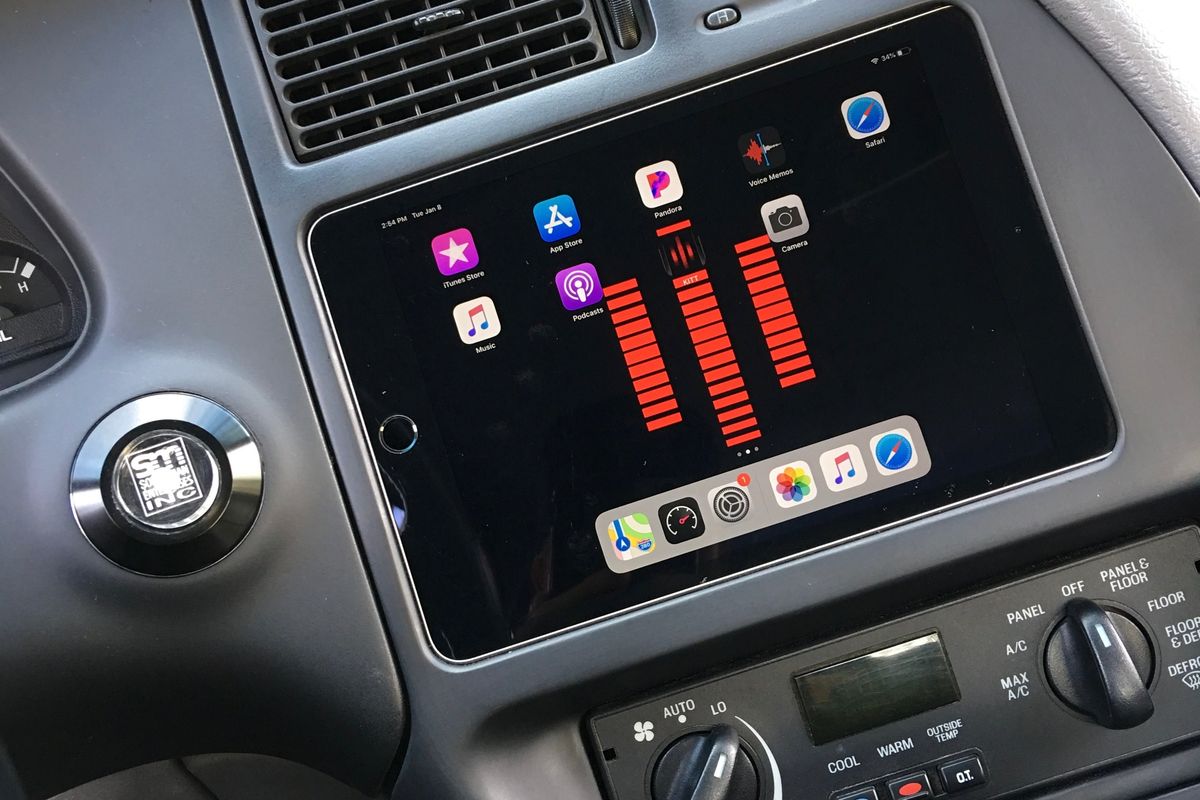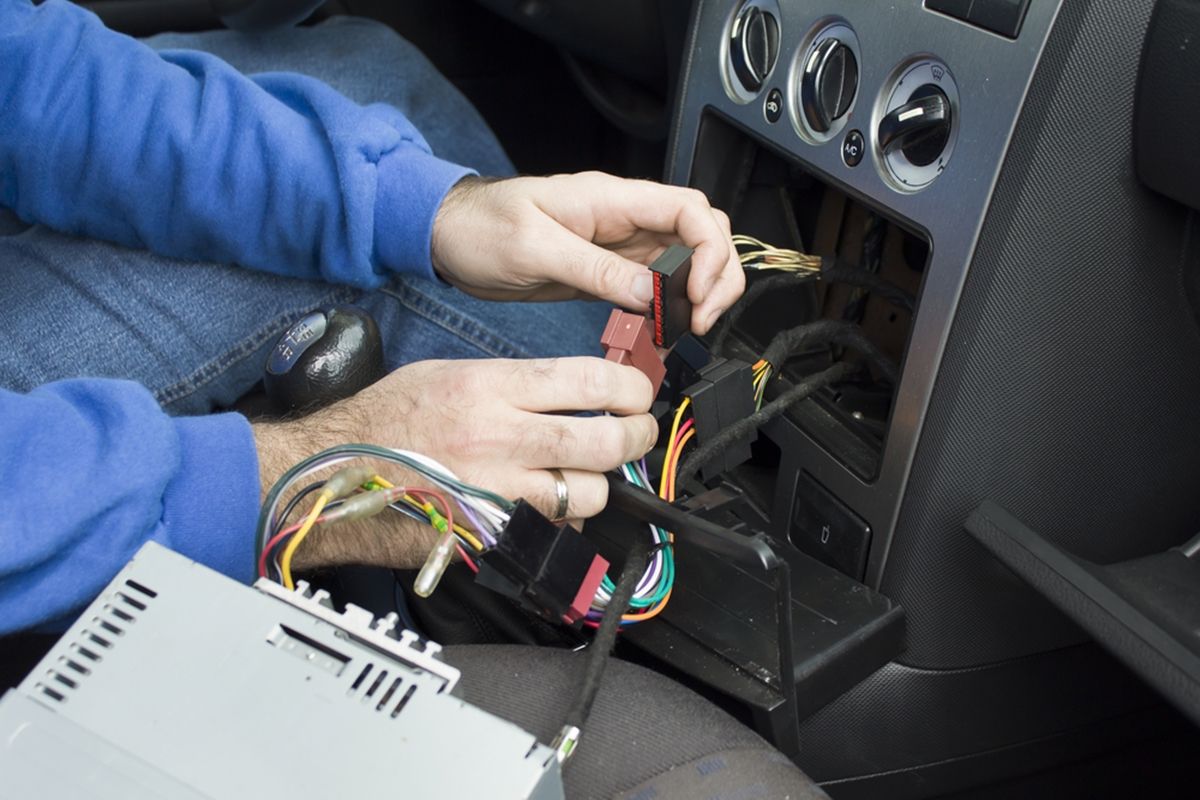Home>Devices & Equipment>Car Audio>How To Install Second Battery For Car Audio
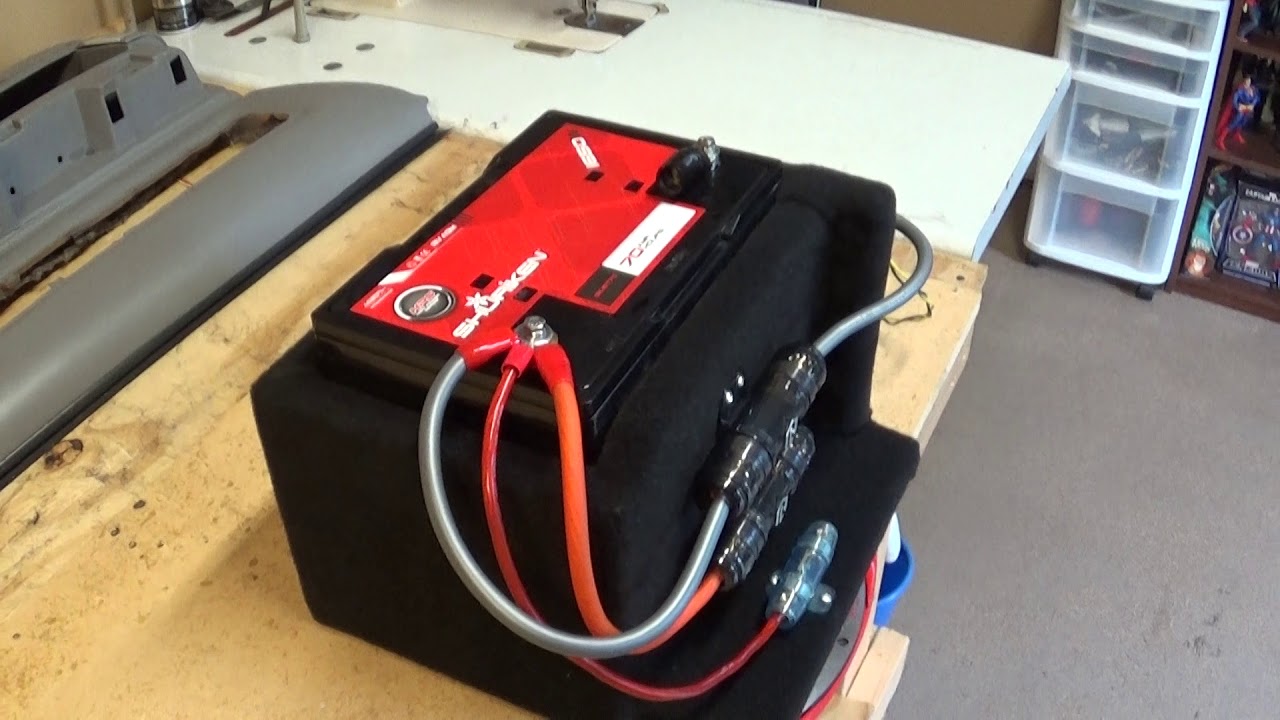

Car Audio
How To Install Second Battery For Car Audio
Modified: January 22, 2024
Learn how to install a second battery for your car audio system and enhance your listening experience with our step-by-step guide. Discover the benefits of having a dedicated power source for your car audio setup.
(Many of the links in this article redirect to a specific reviewed product. Your purchase of these products through affiliate links helps to generate commission for AudioLover.com, at no extra cost. Learn more)
Table of Contents
- Introduction
- Benefits of Installing a Second Battery for Car Audio
- Choosing the Right Battery for Your Car Audio System
- Tools and Materials Needed for the Installation
- Step-by-Step Guide to Installing a Second Battery for Car Audio
- Wiring and Connections
- Proper Maintenance and Care for Your Second Battery
- Conclusion
Introduction
Welcome to the world of car audio, where the sound quality of your vehicle can be taken to the next level. If you are passionate about music and love to listen to your favorite tunes while driving, then you know the importance of having a powerful car audio system. But did you know that installing a second battery for your car audio can greatly enhance your audio experience?
Car audio systems require a significant amount of power, especially if you have a high-end sound system with multiple amplifiers, subwoofers, and speakers. The stock electrical system of most vehicles is not designed to handle the power demands of these systems, which can lead to issues like dimming headlights, voltage drops, and even damage to your battery or the vehicle’s electrical components.
By installing a second battery dedicated to your car audio system, you can ensure that you have enough power to fuel your audio setup without straining the vehicle’s electrical system. This additional battery, commonly known as an auxiliary battery or a deep cycle battery, acts as a backup power source, providing the necessary voltage and preventing any performance or safety issues caused by power shortages.
In this article, we will dive deeper into the benefits of installing a second battery for your car audio system, guide you through the process of choosing the right battery, and provide a step-by-step installation guide to help you set up your audio system for optimal performance.
Benefits of Installing a Second Battery for Car Audio
Installing a second battery for your car audio system offers a myriad of benefits that can greatly enhance your overall audio experience. Let’s take a closer look at some of the key advantages:
- Reliable Power Source: One of the main advantages of a second battery is that it provides a dedicated and stable power source for your car audio system. This means that even during heavy usage or when the engine is turned off, you can still enjoy uninterrupted music without worrying about draining your vehicle’s main battery.
- Prevents Voltage Drops: Car audio systems often draw a significant amount of power, especially during peak performance. With a second battery in place, you can prevent voltage drops that can occur when the system demands more power than the stock electrical system can provide. This ensures that your audio system operates at its optimum level without any performance issues or distortion.
- Protects Your Vehicle’s Electrical Components: By offloading the power demands of the car audio system to a second battery, you minimize the risk of damaging your vehicle’s electrical components. High-powered audio systems can put a strain on the stock electrical system, leading to issues like blown fuses, overheating alternators, and even damaged wiring. A second battery acts as a safeguard, protecting your vehicle’s electrical system from any potential damage.
- Improves Sound Quality: With a dedicated power source, your car audio system can operate at its full potential, resulting in improved sound quality. A second battery ensures that there is enough power available to fuel the amplifiers and deliver clean and distortion-free sound, allowing you to enjoy your favorite music with greater clarity and depth.
- Increased Battery Lifespan: By utilizing a second battery for your car audio system, you reduce the strain on your vehicle’s main battery. This not only extends the lifespan of the main battery but also preserves its capacity for other essential electrical functions, such as starting the engine and powering the lights. Additionally, a second battery is typically a deep cycle battery, designed to handle multiple cycles of discharging and recharging, making it more durable in the long run.
- Flexibility and Versatility: When you have a second battery dedicated to your car audio system, it provides flexibility in terms of how and when you can use your audio system. You can listen to music without the need to run the engine, allow it to power accessories like subwoofers or amplifiers even when the vehicle is turned off, and easily add or modify your audio setup without worrying about exceeding the electrical capacity of the vehicle.
As you can see, installing a second battery for your car audio system brings numerous benefits that enhance performance, protect your vehicle’s electrical system, and ultimately improve your overall audio experience. Now, let’s move on to the next section, where we will explore how to choose the right battery for your car audio setup.
Choosing the Right Battery for Your Car Audio System
When it comes to selecting the right battery for your car audio system, there are a few important factors to consider. Let’s explore them below:
- Battery Type: The first consideration is the type of battery that is suitable for your car audio setup. Deep cycle batteries are the most commonly used for this purpose. Unlike regular starting batteries, deep cycle batteries are designed to provide a steady flow of power for an extended period. They can handle the constant discharging and recharging cycles that car audio systems demand. Opt for a deep cycle battery with a high amp-hour (Ah) rating to ensure sufficient power supply.
- Battery Size and Capacity: The size and capacity of the battery are crucial factors to determine if it will fit in your vehicle and meet the power requirements of your car audio setup. Consider the physical dimensions of the battery and ensure it fits securely in the available space. Additionally, pay attention to the battery’s capacity, measured in ampere-hours (Ah), as it determines the amount of power it can deliver. Consider the power demands of your audio system and choose a battery that can meet those requirements without strain.
- Reserve Capacity: Reserve capacity (RC) is an important specification to consider when choosing a battery. It measures the amount of time a battery can provide a sustained voltage without dropping below a usable level. A higher reserve capacity is preferable, as it indicates that the battery can supply power for a longer duration, even if the charging system fails.
- Cranking Amps: Cranking amps (CA) or cold cranking amps (CCA) indicate the battery’s ability to deliver a burst of power to start the engine. While this may not seem directly relevant to your car audio system, it is still important to consider, as it ensures that the battery can handle the initial surge of power while starting the vehicle.
- Brand and Quality: Opt for batteries from reputable brands known for their quality and reliability. Investing in a well-known brand ensures that you are getting a battery that is built to high standards and will provide long-lasting performance. Read customer reviews and do thorough research to determine the brand that best suits your needs.
- Installation Requirements: Consider the installation requirements of the battery, such as the need for mounting brackets, terminals, and wiring. Ensure that the battery you choose is compatible with your vehicle and can be easily installed without any complications.
By considering these factors, you can choose a battery that matches the power requirements of your car audio system and provides reliable performance for an enhanced audio experience. In the next section, we will discuss the tools and materials needed for the installation of a second battery for your car audio system.
Tools and Materials Needed for the Installation
Before you begin the installation of a second battery for your car audio system, it’s important to gather all the necessary tools and materials. Here’s a list of what you will need:
- Deep Cycle Battery: Choose a deep cycle battery with the appropriate size, capacity, and specifications for your car audio system.
- Battery Tray or Mounting Brackets: Depending on the location you choose for the second battery, you may need a battery tray or mounting brackets to securely hold the battery in place.
- Battery Isolator: A battery isolator is an essential component that ensures the proper charging and isolates the second battery from the vehicle’s main electrical system.
- Battery Cable: You will need battery cables of appropriate gauge and length to connect the second battery to the isolator and to the car audio system components.
- Battery Terminals: Choose high-quality battery terminals to ensure proper and secure connections between the battery cables and the battery terminals.
- Fuse Holder and Fuses: Include a fuse holder and appropriate fuses in the circuit between the primary battery, isolator, and second battery to protect the system from electrical faults.
- Wire Crimpers and Strippers: These tools are necessary for properly preparing and connecting the battery cables and terminals.
- Socket Set and Wrenches: You will need a socket set and wrenches of various sizes to remove and reinstall battery terminals, brackets, and other components.
- Wire Cutters and Electrical Tape: These tools are handy for cutting and securing wires during the installation process.
- Heat Shrink Tubing: Heat shrink tubing provides insulation and protection for wire connections, ensuring long-term durability.
- Electrical Connectors and Crimping Tool: Depending on the specific wiring configurations, you may need various electrical connectors to make secure and proper connections.
- Battery Charger or Maintainer: Consider investing in a battery charger or maintainer to keep both batteries charged and in optimal condition.
It’s important to ensure that all the tools and materials are of high quality to guarantee a safe and reliable installation. Additionally, refer to the manufacturer’s instructions and guidelines for the specific components you choose. With the necessary tools and materials in hand, you are now ready to proceed with the step-by-step installation process of a second battery for your car audio system.
Step-by-Step Guide to Installing a Second Battery for Car Audio
Installing a second battery for your car audio system requires careful planning and precise execution. Follow this step-by-step guide to ensure a successful installation:
- Choose the Battery Location: Select a suitable location for the second battery, keeping in mind factors such as available space, accessibility, and proximity to the car audio system components.
- Secure the Battery: If necessary, mount the battery using a battery tray or mounting brackets to ensure it is securely held in place and protected from vibrations.
- Disconnect the Vehicle’s Main Battery: Begin by disconnecting the negative terminal (-) of the vehicle’s main battery to prevent any electrical accidents during the installation process.
- Install the Battery Isolator: Follow the manufacturer’s instructions to install the battery isolator. Connect the positive terminal (+) of the main battery to the input terminal of the isolator using the appropriate gauge battery cable.
- Connect the Second Battery: Connect the positive terminal (+) of the second battery to the output terminal of the isolator using the appropriate gauge battery cable.
- Wire the Car Audio System: Connect the positive terminal (+) of the second battery to the positive terminal (+) of the car audio system components, such as amplifiers, subwoofers, and speakers, using the appropriate gauge battery cable.
- Connect the Ground Cables: Connect the negative terminal (-) of both the main battery and the second battery to a common grounding point in the vehicle using appropriate gauge battery cables.
- Install the Fuse Holder: Install a fuse holder between the positive terminal (+) of the main battery and the input terminal of the isolator. Insert an appropriately sized fuse into the fuse holder to protect the electrical circuit from electrical faults.
- Check and Double-check Connections: Go through all the connections, ensuring that they are secure and properly insulated. Use heat shrink tubing and electrical tape to protect the connections and prevent any potential short circuits.
- Reconnect the Main Battery: Once all the connections are double-checked and confirmed, reconnect the negative terminal (-) of the main battery.
- Test the System: Start the vehicle and check that the second battery is charging, and the car audio system is receiving power. Monitor the voltage levels and ensure everything is functioning as expected.
It is essential to follow the manufacturer’s instructions and consult professional guidance if needed during the installation process. Additionally, take proper safety precautions, such as wearing protective gloves and eyewear, and double-checking all connections to ensure a safe and reliable installation of the second battery for your car audio system.
With the second battery installed, properly wired, and tested, you can now enjoy an enhanced audio experience in your vehicle without worrying about power shortages or strain on your vehicle’s electrical system.
Wiring and Connections
Proper wiring and connections are crucial when installing a second battery for your car audio system. Here are some important points to consider:
- Battery Cables: Use battery cables of the appropriate gauge to handle the power requirements of your car audio system. The gauge of the cable depends on the distance between the batteries and the power demands of your audio setup. Refer to a wire gauge chart to determine the suitable size.
- Positive (+) Connections: Ensure that all positive connections are made with high-quality battery terminals. Connect the positive terminal (+) of the main battery to the input terminal of the isolator using a battery cable. Connect the positive terminal (+) of the second battery to the output terminal of the isolator. Finally, connect the positive terminal (+) of the second battery to the positive terminal (+) of the car audio system components using appropriate gauge battery cables.
- Negative (-) Connections: Connect the negative terminal (-) of both the main battery and the secondary battery to a common grounding point in the vehicle using suitable gauge battery cables. It is essential to establish a solid and clean connection to ensure proper grounding.
- Protect Connections: To prevent any potential short circuits, protect all connections with heat shrink tubing and electrical tape. This provides insulation and prevents accidental contact between positive and negative terminals.
- Fuse Protection: Install a fuse holder between the positive terminal (+) of the main battery and the input terminal of the isolator. This fuse protects the electrical circuit from overloading or short circuits. Insert an appropriately sized fuse based on the current capacity of your audio system.
- Maintain Cleanliness: During the wiring process, ensure that all connections are clean and free from corrosion or debris. Properly crimp all connectors for a secure and reliable connection.
- Consider Cable Lengths: Take into account the length of the battery cables when routing them. Avoid sharp bends or tight spaces that may cause damage to the cables. Keep them away from moving parts and sources of heat.
- Consult Wiring Diagrams: Refer to wiring diagrams provided by the battery isolator and audio system manufacturers. These diagrams will guide you on the proper connection points and configurations specific to your setup.
It is crucial to follow the manufacturer’s instructions and guidelines for wiring and connections. If you are uncertain about any aspect of the wiring process, consult a professional car audio technician to ensure a safe and correct installation. Once all connections are made, double-check and test the system to ensure everything is functioning properly.
By paying attention to wiring and making secure connections, you can safeguard your audio system and ensure a reliable power supply to enhance your car audio experience.
Proper Maintenance and Care for Your Second Battery
Proper maintenance and care are essential to ensure the longevity and optimal performance of your second battery for your car audio system. Here are some important tips to consider:
- Regular Inspections: Regularly inspect your second battery to check for any signs of corrosion, leaks, or damage. Inspect the battery terminals and cables for tightness and cleanliness. If there are any issues, take appropriate action to address them promptly.
- Keep the Battery Clean: Clean the battery terminals regularly to remove any corrosion or build-up. Use a battery terminal cleaner or a mixture of baking soda and water to clean the terminals. Ensure the terminals are dry before reconnecting the cables.
- Maintain Proper Charge: Keep your second battery properly charged to maintain its performance. If your vehicle is not driven regularly, consider using a battery charger or maintainer to keep the battery charged. This is especially important during periods of inactivity to prevent the battery from discharging excessively.
- Monitor Voltage Levels: Periodically check the voltage levels of both the main battery and the second battery. Use a multimeter or a voltage monitoring system to ensure that the batteries are maintaining the proper voltage. If voltage levels are consistently low, it may indicate an issue with the battery or the charging system.
- Protect from Extreme Temperatures: Extreme temperatures can affect the performance and lifespan of your battery. Protect the second battery from excessive heat or cold by providing proper insulation and ventilation. Avoid exposing the battery to direct sunlight or extreme temperature fluctuations.
- Ensure Proper Ventilation: Make sure that the battery and any associated components, such as the isolator, have adequate ventilation. This will help dissipate heat and prevent the battery from overheating during heavy usage.
- Battery Terminal Protection: Apply a thin layer of petroleum jelly or battery terminal protectant to the battery terminals to prevent corrosion. This will help maintain a solid connection and prolong the life of the battery.
- Follow Manufacturer Recommendations: Always follow the manufacturer’s recommendations for maintenance and care specific to your second battery. They may provide additional guidelines and tips to ensure optimal performance and longevity.
By following these maintenance practices and being proactive in caring for your second battery, you can extend its lifespan and ensure the reliable performance of your car audio system. Remember to consult the battery manufacturer’s instructions and guidelines whenever necessary, and seek professional assistance if you encounter any issues beyond your expertise.
Now that you have learned about the proper care and maintenance of your second battery, you are well-equipped to enjoy an enhanced and uninterrupted car audio experience for years to come.
Conclusion
Installing a second battery for your car audio system is a wise investment if you want to enjoy a powerful and reliable audio experience while driving. By providing dedicated power to your audio system, a second battery prevents voltage drops, protects your vehicle’s electrical components, and improves sound quality.
Choosing the right battery is crucial, considering factors such as battery type, size, capacity, and brand reputation. Gathering the necessary tools and materials, such as battery cables, isolators, and fuses, ensures a smooth installation process.
Proper wiring and connections are essential to ensure a safe and reliable setup. Make sure to use high-quality battery terminals, protect connections, and follow wiring diagrams. Regular maintenance, including inspections, cleaning, and monitoring voltage levels, helps prolong the lifespan and maintain optimal performance of your second battery.
To summarize, installing a second battery for your car audio system offers numerous benefits, including a reliable power source, prevention of voltage drops, protection of electrical components, improved sound quality, increased battery lifespan, flexibility, and versatility. By following the step-by-step installation guide and practicing proper maintenance, you can enjoy a superior audio experience in your vehicle.
Now that you have a solid understanding of the benefits, installation process, and maintenance considerations for a second battery in your car audio system, you can confidently embark on this exciting upgrade. So, gear up and get ready to take your car audio experience to new heights!

